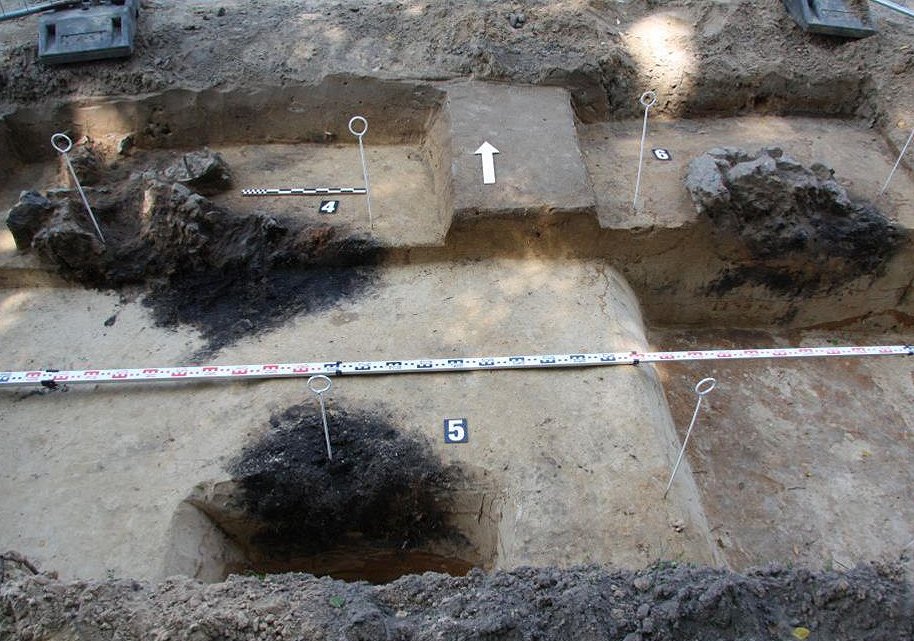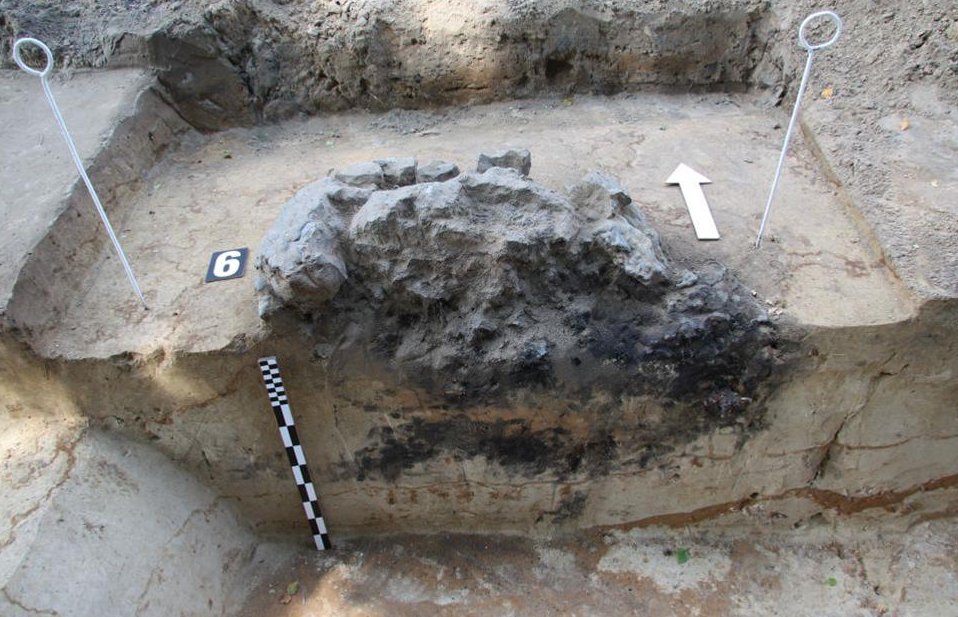2,000-Year-Old Iron Large Smelting Center Unearthed In Poland
MessageToEagle.com – One of the largest metallurgical centers of Europe – the Mazovia Metallurgical Center – has been discovered in Kanie village (Masovian Voivodeship), in east-central Poland.
The settlement with more than 70 ancient furnaces for iron smelting, the so-called ‘bloomeries’ had its metallurgical activity approximately 2 thousand years ago.

It is estimated that from the 2 BC to 4 AD as many as 150 thousand furnaces could be operated in the center.
The discovery was made in the then “barbarian” Europe – as the Romans called the inhabitants of this part of the continent, living outside the Empire.
‘Bloomeries’ were single-use furnaces, partially dug into the ground. chimneys protruding above ground level reached two meters in height. Smelting iron took about a day.
The temperature inside the furnace oscillated around 1200-1300 degrees Celsius – according to information provided by the archaeologist.

Today we discover only the recessed parts of the furnaces, pits filled with waste material, slag. The top part of the ‘bloomery’, clay shaft – was broken after completion of the smelting process to get to the iron obtained from bog iron,” said the PAP excavations leader, Dr. Tomasz Kołomański, in an interview for PAP.
Still not much is known about iron production technology from two thousand years ago because this activity has not been recreated yet.
“Today during the experimental attempts to smelt iron from bog iron, we are able to produce a lump of iron that fits in one hand, while the ancient metal workers obtained 20-30 kg of iron from 200 kg load” – explained Dr. Kołomański.
In addition to bloomeries, excavations have revealed the remains of large utility rooms with loom weights and clay spindle whorls, evidence of occupations related to handicraft, weaving and spinning.
Large amount of animal bones originating from cattle, pigs, sheep and goats, and even deer can say much about the diet of these ancient people, identified with the Vandals who are believed to have migrated from southern Scandinavia to Poland about 120 BC. Later, in the half of the 5th century, their representatives sacked and looted Rome.
MessageToEagle.com
Expand for referencesReferences:
Related Posts
-
 Vordingborg: Denmark’s Biggest Royal Castle Re-Writes History And Puts King Canute VI In The Spotlight
No Comments | Oct 11, 2016
Vordingborg: Denmark’s Biggest Royal Castle Re-Writes History And Puts King Canute VI In The Spotlight
No Comments | Oct 11, 2016 -
 Operation Nightingale – Veterans Uncover Impressive 2,000-Year-Old Celtic Treasure
No Comments | Mar 3, 2025
Operation Nightingale – Veterans Uncover Impressive 2,000-Year-Old Celtic Treasure
No Comments | Mar 3, 2025 -
 Giant Underground Ocean Hidden In The Taklamakan Desert – Discovered
No Comments | Aug 2, 2015
Giant Underground Ocean Hidden In The Taklamakan Desert – Discovered
No Comments | Aug 2, 2015 -
 Ancient Graves That Date Back To Pre-Vijaya Era Discovered In Sri Lanka
No Comments | Oct 21, 2015
Ancient Graves That Date Back To Pre-Vijaya Era Discovered In Sri Lanka
No Comments | Oct 21, 2015 -
 Mysterious Kofun – Ancient Japanese Tombs Were Aligned Towards The Rising Sun And Goddess Amaterasu – Satellite Images Reveal
No Comments | Jan 20, 2022
Mysterious Kofun – Ancient Japanese Tombs Were Aligned Towards The Rising Sun And Goddess Amaterasu – Satellite Images Reveal
No Comments | Jan 20, 2022 -
 Intriguing 9,000-Year-Old Well-Preserved Underwater Site Found In Sweden
No Comments | Nov 15, 2016
Intriguing 9,000-Year-Old Well-Preserved Underwater Site Found In Sweden
No Comments | Nov 15, 2016 -
 Cooking In Indus Valley – Leftovers In Prehistoric Kitchen’s Vessels Analyzed
No Comments | Mar 25, 2022
Cooking In Indus Valley – Leftovers In Prehistoric Kitchen’s Vessels Analyzed
No Comments | Mar 25, 2022 -
 500-Meter Long ‘Giant Fence’ Discovered Near The Ancient City Of Avaris, Egypt
No Comments | Nov 26, 2015
500-Meter Long ‘Giant Fence’ Discovered Near The Ancient City Of Avaris, Egypt
No Comments | Nov 26, 2015 -
 Spread Of Early Farming Across Atlantic Coast Of Europe – In New Light
No Comments | Apr 27, 2020
Spread Of Early Farming Across Atlantic Coast Of Europe – In New Light
No Comments | Apr 27, 2020 -
 Deformed Skulls And Clues Found In Ancient Cemetery In Hungary
No Comments | May 1, 2020
Deformed Skulls And Clues Found In Ancient Cemetery In Hungary
No Comments | May 1, 2020
